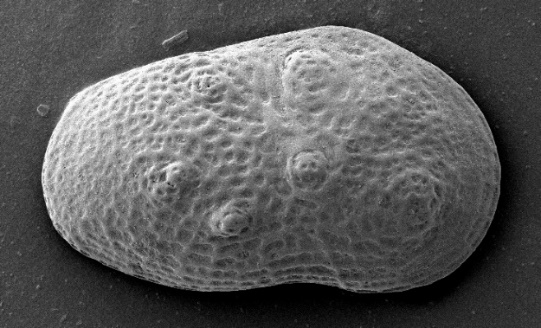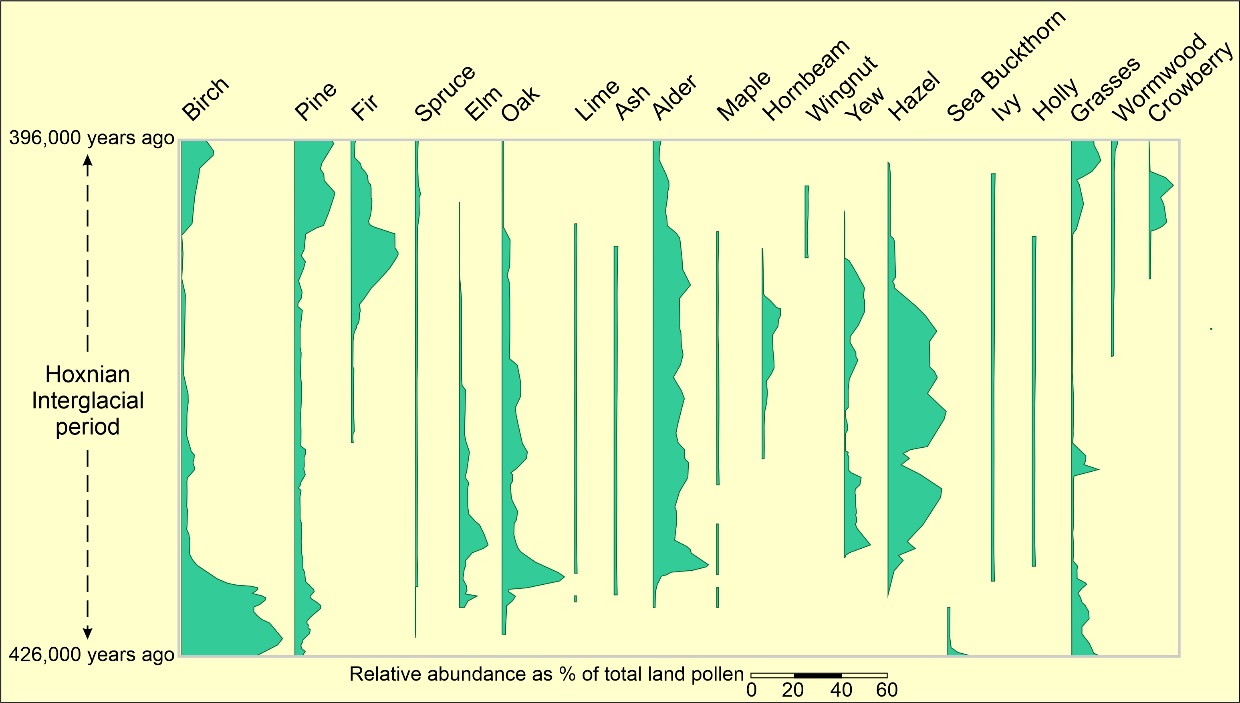Why is our site so special?
Professor David Horne of Queen Mary University of London explains…
Since 1979 Marks Tey Brickpit has been a designated Site of Special Scientific Interest (SSSI) (under Section 28 of the Wildlife and Countryside Act 1981) because of its important Pleistocene lake sediments, in which a pollen record of vegetation change through the entire Hoxnian interglacial period has been documented. Research within the SSSI is conducted with the consent of Natural England as well as W.H. Collier Ltd.
The Hoxnian lake occupied a deep hollow in the landscape left by an ice sheet that reached this area at its furthest extent during the preceding cold interval (known as the Anglian glacial period). The interglacial period, during which climate was similar to that of England today, lasted approximately 30,000 years between 426,000 and 396,000 years ago. It is of particular interest for its archaeological evidence of early human occupation in Britain (although such evidence is very sparse at Marks Tey itself), as well as its correlation with the early part of Marine Isotope Stage 11 (as recorded in deep-sea sedimentary records), widely regarded as a good past analogue for the present warm period. However, the 14m-thick interglacial sequence lies entirely below the floor of the brickpit and studies have required the extraction of sediment cores from boreholes. In contrast, a more than 20m-thick sequence of sedimentary layers, deposited in the colder, later part of MIS11, is exposed in the pit from which clay is extracted for brickmaking, where investigations can be conducted with relative ease.
From 2007 to the present, continuing research on this complex post-Hoxnian sequence, which includes not only silty clays but also sands, gravels and a thin, localised peat bed, has yielded new assemblages of molluscs, small vertebrates and ostracods (crustacean microfossils). Research on the rich ostracod fauna, combining species-based palaeoclimate reconstructions with oxygen and carbon isotope analyses of ostracod shells, has revealed a detailed record of post-interglacial climate fluctuations that can be interpreted as stadials (cold episodes) and interstadials (warm episodes), each of a few thousand years’ duration.
Key references
Candy, I. & Horne, D.J. 2014. The Hoxnian interglacial, MIS 11 and the lacustrine sequence at Marks Tey, Essex. In: Bridgland, D.R., Allen, P. & White, T.S. (Eds). The Quaternary of the Lower Thames & eastern Essex: Field Guide, 79–91. The Quaternary Research Association, London.
Horne, D.J., Bal, D., Benardout, G., Huckstepp, T., Lewis, S.G. & March, A. 2014. Ostracods from Marks Tey: palaeoenvironmental and palaeoclimate implications. In: Bridgland, D.R., Allen, P. & White, T.S. (Eds). The Quaternary of the Lower Thames & eastern Essex: Field Guide, 100–108. The Quaternary Research Association, London.
March, A., 2020. Climate variability during MIS 11 in Britain. PhD thesis, Queen Mary University of London, 414 pp.
Turner, C., 1970. The Middle Pleistocene deposits at Marks Tey, Essex. Philosophical Transactions of the Royal Society B 257, 373–440.
Tye, G.J., Sherriff, J., Candy, I., Coxon, P., Palmer, A., McClymont, E.L., Schreve, D.C., 2016. The δ18O stratigraphy of the Hoxnian lacustrine sequence at Marks Tey, Essex, UK: implications for the climatic structure of MIS 11 in Britain. Journal of Quaternary Science 31, 75–92.



